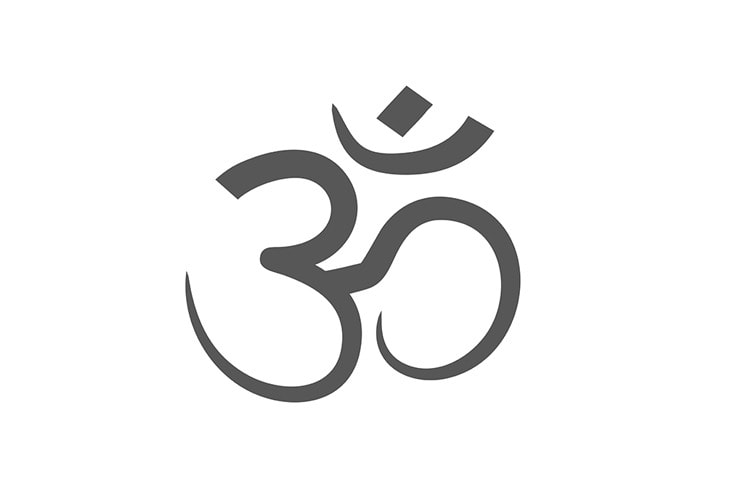 Photo by Megan Menegay on Unsplash The wise man should restrain his senses like the crane and accomplish his purpose with due knowledge of his place, time and ability. - Chanakya This blog post is part of our Yoga Sutras series. Want to start at the beginning? Yoga Sutra 2.30 अहिंसासत्यास्तेयब्रह्मचर्यापरिग्रहा यमाः ahiṃsāsatyāsteyabrahmacaryāparigrahā yamāḥ Yama is non-violence, truthfulness, non-covetousness, right use of energy, and non-possessiveness At the heart of this path stands Yama, the first limb of Raja Yoga, which serves as the first half of the ethical guidelines underpinning Patanjali’s method. Yama means control or restraint in Sanskrit. These are the boundaries we place on our behavior in order to live more harmoniously with the outer world. They offer a guide to navigating the complexities of external life - interactions with others, society itself, our senses, and environment - with grace and wisdom.
Yoga Sutra 2.30 introduces us to the five Yamas: Ahimsa (non-violence), Satya (truthfulness), Asteya (non-covetousness), Brahmacharya (right use of energy), and Aparigraha (non-possessiveness). In Sutra 2.31, Patanjali calls these principles the maha vratam (great vows) that are universal and applicable to everyone regardless of their social status, the place, time, or circumstances under which they live.
0 Comments
 Photo by Joel Fulgencio on Unsplash There are no facts, only interpretations. ― Friedrich Nietzsche This blog post is part of our Yoga Sutras series. Want to start at the beginning? Yoga Sutra 2.33 वितर्कबाधने प्रतिपक्षभावनम् Vitarka bādhane pratipakṣa bhāvanam If troubled by negative thoughts, cultivate contrary thoughts. Yoga Sutra 2.33 is one of the Sutras I return to most often. In my view, this one gives perhaps the most practical advice that a practitioner can apply in their daily life.
For that reason, I’d like to move a little out of order here. We’ll study the eight limbs of Raja Yoga, one month at a time starting next month. Now let’s look at Yoga Sutras 2.33 and 2.34, which appear in the middle of Patanjali’s description of these eight components and specifically, the first two: Yama and Niyama.  Photo by Patrick Hendry on Unsplash Painful as it may be, a significant emotional event can be the catalyst for choosing a direction that serves us - and those around us - more effectively. Look for the learning. - Louisa May Alcott This blog post is part of our Yoga Sutras series. Want to start at the beginning? Yoga Sutra 2.26 विवेकख्यातिरविप्लवा हानोपायः vivekakhyātiraviplavā hānopāyaḥ The method of removing ignorance is by unceasing discerning awareness. Viveka kakhyatir, the first phrase of Sutra 2.26, is an important concept in Vedic studies. Sometimes simply called viveka, it is discernment of the difference between “the real [and] the unreal.” (Satchidananda, 294) It is wisdom.
 Photo by Matt Noble on Unsplash The "voice in my head" is not who I am. "Who am I, then?" The one who sees that. - Eckhart Tolle This blog post is part of our Yoga Sutras series. Want to start at the beginning? Yoga Sutra 2.21 तदर्थ एव दृश्यस्यात्मा tadartha eva dṛśyasyātmā The seen exists for the sake of the seer. Now we come to the reason behind all of these experiences. Why should we need to go through the ups and downs of life in the first place? Why would we need to go through pain at all?
Patanjali tells us in these next few sutras that all our experiences are here to benefit us - the individual self (atma) - by educating us on our True Nature. Whatever comes to us is a way to further improve ourselves and overcome the obstacles on our pathway to peace. This is the law of karma, which is natural cause and effect.  Photo by Arun Antony on Unsplash Liberation must come from within. - Sandra Cisernos This blog post is part of our Yoga Sutras series. Want to start at the beginning? Yoga Sutra 2.15 परिणामतापसंस्कारदुःखैर्गुणवृत्तिविरोधाच्च दुःखमेव सर्वं विवेकिनः pariṇāmatāpasaṃskāraduḥkhairguṇavṛttivirodhācca duḥkhameva sarvaṃ vivekinaḥ The discriminating realize that all actions ultimately result in pain. Again, this first part of Book Two of The Yoga Sutras is ostensibly quite dark as Patanjali outlines the things that cause humans suffering. Ultimately, it is uplifting as it lights the pathway for us out of the mire of our mind.
It reminds me of a comparison Swami Satchidananda made in one of his lectures about two proverbs he had learned growing up in Tamil Nadu. One said “oh lord, life is very hard” and the other, “oh lord, life is very easy.” What this means is, it’s all due to your perspective. All of us gain and lose, flow and struggle, are ill and heal, were born and will die. Pain is life but suffering is a choice.  Photo by Louis Galvez on Unsplash The human body has limitations. The human spirit is boundless. - Dean Karnazes This blog post is part of our Yoga Sutras series. Want to start at the beginning? Yoga Sutra 2.3 अविद्यास्मितारागद्वेषाभिनिवेशाः क्लेशाः avidyāsmitārāgadveṣābhiniveśāḥ kleśāḥ There are five causes of suffering: ignorance, egoism, attachment, aversion and fear of death In book two, Patanjali dives into the practical steps of yoga headfirst.
The first sutra in this pada (or chapter) tells us that there are three practices that constitute what BKS Iyengar defines as the “yoga of action” or kriya yoga. Yoga Sutra 2.1 says that kriya yoga is composed of discipline, self-study and surrender. Practicing kriya yoga will diminish “mental turmoil” (Shoshoni, 18) and bring one closer to enlightenment, according to Yoga Sutra 2.2. The third sutra in this pada might seem kind of heavy. 2.3 lists the five causes of suffering (kleshas) and Patanjali goes into depth about each one from 2.5 - 2.9. Yoga Sutra 2.4 tells us that the first klesha, ignorance, is the “fertile soil” (Stiles, 17) for the others. All other suffering and turmoil originates from a “lack of true knowledge.” (Iyengar, 112)  Photo by Michael Dziedzic on Unsplash Close your eyes and you will see clearly. - Taoist wisdom This blog post is part of our Yoga Sutras series. Want to start at the beginning? Yoga Sutra 1.41 क्षीणवृत्तेरभिजातस्येव मणेर्ग्रहीतृग्रहणग्राह्येषु तत्स्थतदञ्जनतासमापत्तिः kṣīṇa-vr̥tter-abhijātasy-eva maṇer-grahītr̥-grahaṇa-grāhyeṣu tatstha-tadañjanatā samāpattiḥ When the Mind Is One-Pointed, it Becomes Stable and Clear Like a Flawless Crystal. In this State, the Perceiver, Perceived and Instrument of Perception Are One, Just as a Crystal Reveals Objects Placed Near it. This Is the Consummation of Samadhi. Now, Patanjali dives into the most subtle parts of the method he is describing, called Raja Yoga or the Eight-Limbed Path (Ashtanga Yoga). As we discussed in February, this first book of the Yoga Sutras is for Patanjali’s most advanced students and is simultaneously a broad overview of Raja Yoga basics.
 Photo by Wonderlane on Unsplash Just be good and do good. - Sri Swami Sivananda This blog post is part of our Yoga Sutras series. Want to start at the beginning? Yoga Sutra 1.33 मैत्रीकरुणामुदितोपेक्षाणां सुखदुःखपुण्यापुण्यविषयाणां भावनातश्चित्तप्रसादनम् maitrīkaruṇāmuditopekṣāṇāṃsukhaduḥkhapuṇyāpuṇyaviṣayāṇāṃbhāvanātaścittaprasādanam Cultivating Friendliness Toward the Happy, Compassion for the Unhappy, Delight in the Virtuous and Disregard Toward Vice, One's Mind Becomes a Home to Serenity. A perennial favorite, Sutra 1.33 gives us some of the most practical advice in the entire Yoga Sutras. As practical as it is, it may also be the most difficult discipline of all.
Even more challenging than mastering any arm balancing asana or completing a 10-day silent retreat, I think. Because this yoga is applied within our daily activities and in our reactions to the various experiences that come our way. It’s very simple really. Yoga Sutra 1.33 reminds us that in order to retain our peace of mind, we’ll need four tools to overcome four different types of situations. In the Sonia Sumar Method, we often refer to them as the “four locks and keys.”  Photo by Jukan Tateisi on Unsplash When the mind, one-pointed and fully focused, knows the supreme silence in the Heart, this is true learning. - Ramana Maharshi This blog post is part of our Yoga Sutras series. Want to start at the beginning? Yoga Sutra 1.32 - तत्प्रतिषेधार्थमेकतत्त्वाभ्यासः - tat-pratiṣedha-artham-eka-tattva-abhyāsaḥ The Practice of Concentration on a Single Subject (or the Use of One Technique) Is the Best Way to Prevent the Obstacles and Their Accompaniments. This month, we discuss only three Yoga Sutras (1.30-1.32) but boy, do they pack a punch! Last month, Patanjali hinted in Sutra 1.29 that by reverentially repeating Om, we can overcome all the obstacles on our spiritual pathway.
But it would be helpful to know just what obstacles to expect and how to spot them in order to prepare ourselves. Everything in life is vibration. - Albert Einstein Yoga Sutra 1.26 स पूर्वेषाम् अपि गुरुः कालेनानवच्छेदात्॥२६ sa pūrveṣām-api-guruḥ kālena-anavacchedāt Unconditioned by Time, Isvara Is the Teacher of Even the Most Ancient Teachers Why do we chant Om in yoga? Why chant at all? As modern science is beginning to shed light on the mechanisms behind the ancient science of yoga, we are learning that vibration - energy - is all around us and within us. After all, didn’t Einstein also determine that matter (e.g. our body) is simply a manifestation of energy in the physical plane?
|
Archives
July 2024
About
Just some thoughts about yoga as I go... Categories
All
|
FIVE KEYS YOGA
|
WHAT OUR CLIENTS SAYFive Keys is fantastic! The studio is lovely and soothing, and the teachers are very caring and attentive. |
I've ... probably been to 25 different yoga studios. This is one of the most welcoming, calming spaces with very talented instructors. |
I love this yoga studio. It's a great balance of a good workout and relaxation and feels like a real community. |
An ideal studio for someone new to yoga. |


 RSS Feed
RSS Feed
